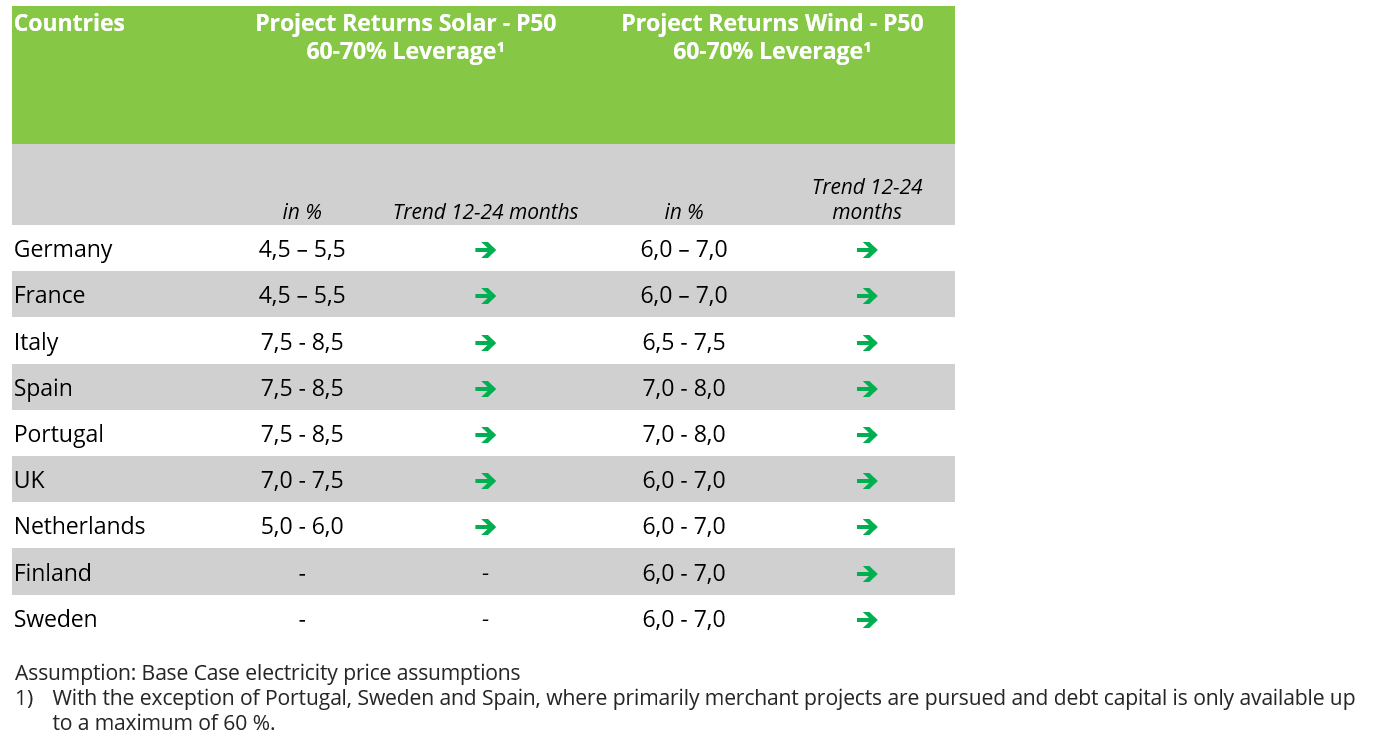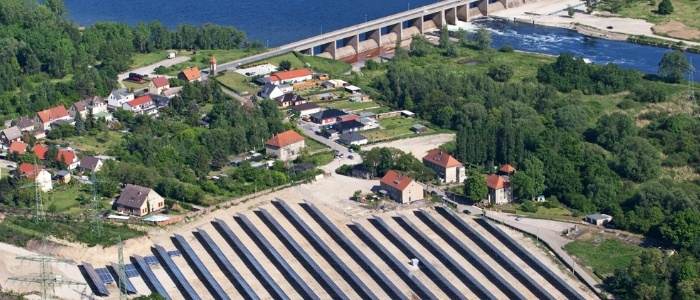Investments in renewable energies have proven their stability during the pandemic crisis. In view of the rising demand for green electricity, falling prices for the plants and AI-supported optimization of output, the yields of the plants can be increased even further in the coming years. "And this from currently already solid 4.5 percent in Germany and up to 8.5 percent in Spain", says Markus W. Voigt, CEO of the aream Group.
The conditions, such as average returns, are very different in Europe, especially for solar systems. While wind turbines across Europe generally achieve yields of between six and seven percent, the yields for solar systems vary between 4.5 and 5.5 percent in Germany and 7.5 to 8.5 percent in Portugal. "This is not only due to the stronger irradiation, but also to the different framework conditions," says Voigt. While regulation is quite high in Germany, just like in France and with some restrictions in the Netherlands, providers in Spain, Italy and Portugal enjoy more freedom.
"This applies above all to the possibilities of electricity marketing," says Voigt. "The technical requirements are largely identical everywhere. In Germany, the most developed market for renewable energies in Europe, efficient markets have already formed over the years and due to the number of installed systems. "Here we have very competitive costs and stable income streams thanks to the statutory feed-in tariffs," says Voigt. However, these do not leave much room for improvement. The increase in returns is mainly due to better utilization of the plants and more efficient management.
In the Netherlands, there is increasing demand for green electricity not only from the state but also from the public. Spain and Portugal, as well as Italy, with some slight exceptions, offer excellent conditions for solar and wind power plants. Spain is the leader in marketing electricity via so-called PPAs, Power Purchase Agreements. This direct marketing opens up the opportunity for suppliers to fix prices in the long term and thus achieve stability in income streams. Portugal is also moving in this direction. "The trend towards direct purchase agreements (PPAs) with companies is a value driver in the use of price differences between market prices and feed-in tariffs," says Voigt.
There is political support for this even without subsidies: The new EU directive on the promotion of renewable energies will remove existing barriers to direct marketing from 2021. The administrative hurdles will be removed. "In the coming years, an increasing number of renewable energy plants will reach the end of their subsidy period. Many of these plants will continue to be operated without government subsidies and will be available for direct marketing to end users," says Voigt.
In 2017, the first PPAs for renewable energy plants were reported from Portugal and Spain, which were built and are operated entirely without the use of statutory renewable energy subsidies. This market will grow rapidly in the coming years. By 2018, almost two gigawatts of renewable capacity have been secured with long-term PPAs (> ten years) for onshore wind and PV capacity.
"Renewable PPAs with an adequate risk profile bring a significant economic advantage for producers and buyers," says Voigt. In principle, we expect investors to achieve increasing returns from existing plants in the coming years. Especially since the possibilities for optimization are far from exhausted. In this way, the previous returns can be maintained in the future - and even increased during ongoing operation.

PRESSEKONTAKT:
Leandra Kiebach
T: +49 (0)211 30 20 60 4-2
E: lk@aream.de


